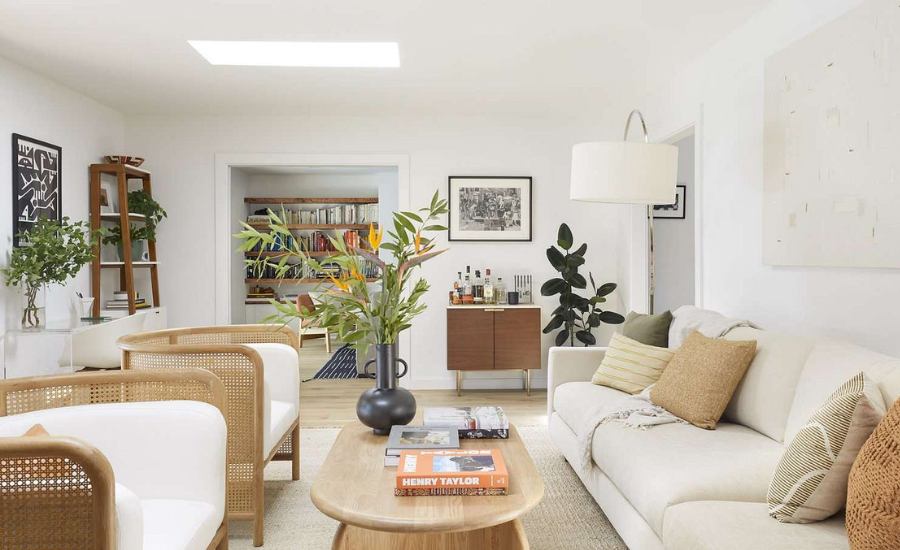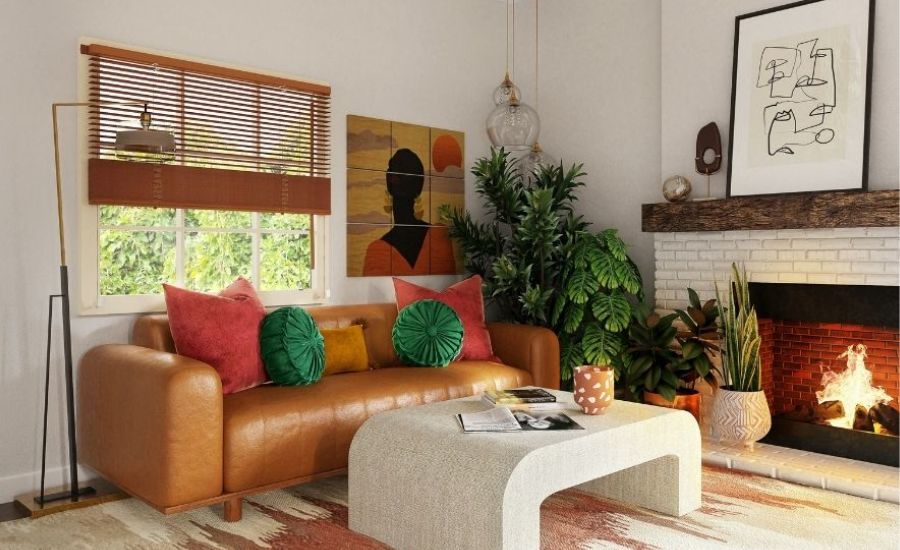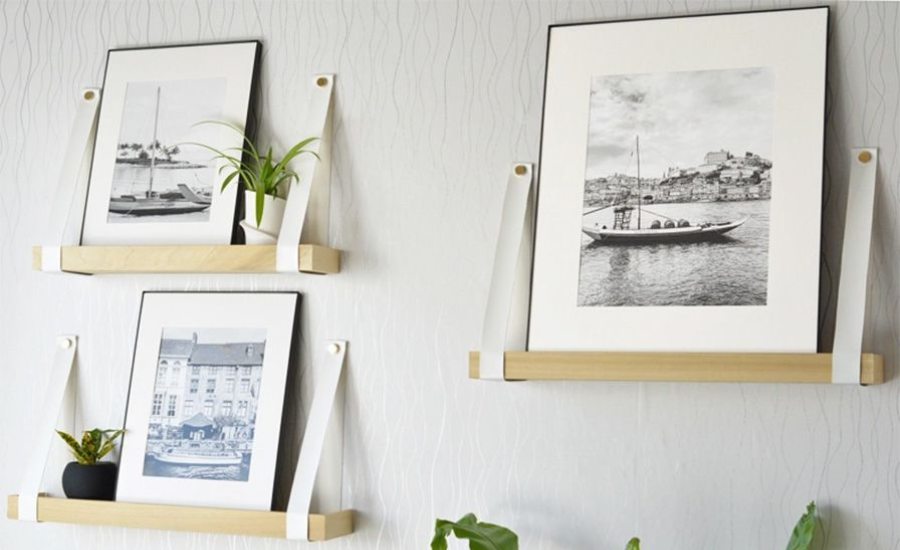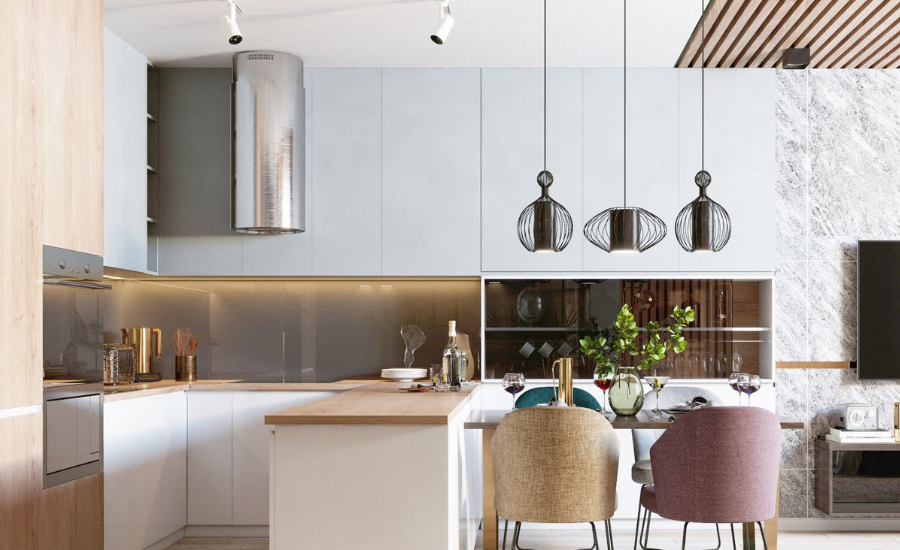Discover the latest trends and insights with the most innovative decorator advice at DecoratorAdvice.com. Staying updated with current interior design insights is crucial for anyone aiming to elevate their home’s visual appeal. Whether you are an experienced interior designer or a homeowner seeking to revitalize your space, understanding the latest trends, techniques, and practical advice can profoundly impact your home’s style. This in-depth guide explores contemporary design movements and practical DIY suggestions, empowering you to craft a chic and inviting living environment.
Exploring the Evolution of Interior Design Trends

The Development of Interior Design Trends
Interior design trends often mirror the shifting cultural and societal landscapes. Over time, these trends evolve, capturing the essence of different eras and tastes. For instance, the minimalist approach that defined the 2010s emphasized simplicity, clean lines, and a clutter-free environment. This trend was a response to the growing complexity and busyness of modern life, reflecting a desire for tranquility and order.
In contrast, recent years have seen a resurgence of maximalism—a bold departure from minimalism. This trend embraces opulence, vibrant colors, and eclectic decor, celebrating abundance and personal expression. Maximalism is defined by the layering of textures, the blending of patterns, and the integration of diverse elements to craft vibrant and visually engaging spaces.
By understanding these evolving trends, you can design spaces that not only align with current aesthetics but also showcase your unique personality. Whether you’re drawn to the serenity of minimalism or the exuberance of maximalism, recognizing the trajectory of design trends allows you to craft environments that are both stylish and reflective of your personal style.
Current Insights into Home Decor
Navigating the Ever-Changing Landscape of Home Decorating
The realm of home decor is continuously evolving, with fresh trends and innovative ideas appearing regularly. Keeping abreast of the latest insights in home decorating is crucial for maintaining a residence that is both stylish and practical. This segment delves into the core principles of contemporary decorating, highlighting the significance of flexibility and creativity in crafting a home environment that reflects both current trends and personal style.
In today’s dynamic decorating world, it’s essential to be adaptable. Embracing new design concepts and incorporating them thoughtfully into your home can enhance its aesthetic appeal and functionality. Creativity plays a vital role, allowing you to blend modern trends with your unique preferences to create a space that is not only up-to-date but also deeply personal. By staying informed about emerging styles and integrating them creatively, you can ensure that your home remains both fashionable and uniquely suited to your tastes.
Exploring Color Trends and Furniture Selection
Current Color Trends for Home Decor
Color schemes play a crucial role in defining the ambiance of any room. The current trends in color range from the soothing tones of blue and green to the energetic and eye-catching shades like terracotta and mustard yellow. Selecting the appropriate color palette is essential as it sets the mood and atmosphere of your space, influencing how the room feels and looks.
Smart Furniture Selection and Storage Solutions
When embarking on a home decorating project, proper management of your space and belongings is essential for a seamless experience. To streamline the renovation process, consider utilizing self-storage solutions, such as those offered in Grantsville. These storage units provide a secure and organized way to keep furniture, decor, and other personal items that are not immediately needed during your project. By opting for self-storage, you can keep your space uncluttered and focused on your decorating goals, ensuring that your items remain protected and readily available when needed. This approach minimizes disruptions and supports a more efficient decorating process.
Selecting the Ideal Furniture
Choosing the perfect furniture involves balancing aesthetics with functionality. When selecting pieces, prioritize quality, comfort, and style to ensure that each item enhances the overall design of your space. A thoughtful approach to furniture selection will ensure that your choices not only complement the room’s decor but also provide practical benefits, contributing to both the visual appeal and usability of your home.
Comparing Modern and Traditional Design Styles

Defining Modern and Traditional Aesthetics
Grasping the differences between modern and traditional design styles can greatly shape the direction of your home decor. Modern design is distinguished by its emphasis on simplicity and functionality. It often features sleek, clean lines, a restrained color palette dominated by neutral tones, and a minimalistic approach to decorative elements. This style prioritizes open spaces and uncluttered environments, creating a sense of calm and sophistication.
In contrast, traditional design is marked by its ornate details and timeless appeal. It incorporates rich, deep colors, luxurious fabrics, and classic furniture pieces that evoke a sense of history and elegance. Traditional interiors often showcase intricate patterns, elaborate moldings, and a more opulent aesthetic, reflecting a sense of grandeur and refinement.
By recognizing these fundamental characteristics, you can make an informed decision about which design style best aligns with your personal taste and the atmosphere you wish to create in your home. Whether you lean towards the streamlined elegance of modern design or the classic charm of traditional decor, understanding these differences will help you craft a space that truly reflects your style preferences.
Eco-Friendly Decorating Strategies: Embracing Sustainability in Your Home
Incorporating Sustainable Materials and Practices
Eco-friendly decorating is not just a trend but a commitment to creating a more sustainable living environment. Embracing this approach means making conscious choices that minimize environmental impact while enhancing your home’s aesthetic appeal.
One effective strategy is to repurpose existing furniture, giving it a new lease on life instead of discarding it. This can involve refinishing, reupholstering, or creatively updating old pieces to fit your current decor. By doing so, you reduce waste and extend the lifecycle of your furnishings.
Choosing non-toxic paints and finishes is another crucial aspect of sustainable decorating. Opting for low-VOC (volatile organic compounds) or natural paint options helps ensure better indoor air quality and reduces harmful emissions.
Incorporating natural elements into your decor not only brings beauty to your home but also supports a healthier environment. Adding houseplants can improve air quality and create a calming atmosphere. Similarly, using reclaimed wood for furniture or decorative accents adds character while promoting responsible sourcing of materials.
By integrating these sustainable practices, you contribute to a greener planet while enjoying a stylish and health-conscious living space. This approach reflects a growing awareness of environmental issues and a dedication to making more responsible choices in home decorating.
DIY Decorating Projects: Simple and Creative Ideas for Beginners

Transform Your Space with Easy DIY Projects
Engaging in do-it-yourself (DIY) decorating projects is an excellent way to infuse your personal style into your home. These projects not only offer a creative outlet but also allow you to make meaningful changes to your living space without significant expense. For those new to DIY, starting with manageable projects can be both rewarding and fun.
Lighting Design Essentials: Understanding the Different Types of Lighting
Crafting the Perfect Ambiance with Diverse Lighting Types
Effective lighting design is crucial for creating an inviting and functional space. By incorporating a variety of lighting types, you can enhance both the aesthetics and functionality of your home. Recognizing the functions of ambient, task, and accent lighting can assist you in creating a well-lit space that suits your needs and expresses your personal style.
Optimizing Small Living Areas: Innovative Space-Saving Strategies
Transforming Compact Spaces with Practical and Stylish Solutions
Living in a compact area demands creative strategies to enhance functionality while maintaining a stylish environment. Effective space-saving techniques can significantly improve the usability of small living spaces, ensuring they are both practical and visually appealing.
Seasonal Home Decorating: Transforming Your Space to Suit Every Season
Refreshing Your Home with Seasonal Decor: Creative Ideas for Each Season
Adapting your home decor to reflect the changing seasons can keep your living space feeling vibrant and current year-round. Seasonal decorating involves making thoughtful adjustments to your interior design, ensuring that each season’s unique charm is incorporated into your home.
Enhancing Your Space with Wall Art: Selection and Arrangement Tips
Infusing Your Walls with Personality: A Guide to Choosing and Arranging Art
Adding wall art to your home decor is an effective way to infuse personality and visual appeal into any room. The right pieces not only enhance the aesthetic of your space but also reflect your individual taste and style.
Transforming Your Outdoor Spaces: Expert Tips for Creating Inviting and Functional Areas
Designing Welcoming Outdoor Environments
Your outdoor living area is more than just an extension of your indoor space—it’s a valuable part of your home where you can relax, entertain, and enjoy nature. Cost-Effective
Decorating Strategies: Maximizing Style on a Budget
Transforming Your Space with Minimal Expense
Decorating doesn’t have to come with a hefty price tag. With a little creativity and strategic planning, you can achieve a fresh, stylish look for your home without overspending.
Achieving a Unified Design: Ensuring Consistency and Harmony in Your Space
Crafting a Harmonious Home Environment
Creating a cohesive design for your home involves more than just arranging furniture and choosing colors. It’s about orchestrating all elements to work together harmoniously, creating a space that feels both intentional and comfortable.
Selecting and Styling Home Accessories: Elevating Your Space with the Perfect Touches
Enhancing Your Decor with Thoughtful Accessories
Accessories play a crucial role in refining and personalizing your living space. They serve as the final layer of design that ties everything together and infuses your room with character.
Avoiding Common Decorating Pitfalls: Tips for a Flawless Home Design
Navigating Common Decorating Errors
When it comes to home decorating, certain missteps can disrupt the harmony and functionality of your space. Recognizing and addressing these common decorating pitfalls is key to achieving a well-designed, inviting environment.
Facts
- Evolution of Interior Design Trends:
- Minimalism: Defined by its simplicity, clean lines, and an uncluttered environment. It emerged in response to the complexity of modern life.
- Maximalism: A recent trend embracing opulence, vibrant colors, and eclectic decor, featuring layered textures and mixed patterns.
- Current Home Decor Insights:
- Modern decorating requires adaptability and creativity to blend new trends with personal preferences.
- Utilizing self-storage solutions, like those in Grantsville, can keep your space uncluttered during renovations.
- Color Trends and Furniture Selection:
- Current color trends include soothing blues and greens, as well as bold shades like terracotta and mustard yellow.
- Selecting furniture should balance aesthetics with functionality, focusing on quality, comfort, and style.
- Design Styles:
- Modern Design: Emphasizes simplicity, clean lines, and neutral colors, creating a calm and sophisticated environment.
- Traditional Design: Showcases elaborate details, deep colors, and classic furnishings, embodying elegance and historical charm.
- Eco-Friendly Decorating:
- Strategies include repurposing furniture, choosing non-toxic paints, and incorporating natural elements like houseplants and reclaimed wood.
- DIY Decorating Projects:
- Simple projects include creating custom wall art, refurbishing old furniture, and crafting decorative accessories.
- Lighting Design Essentials:
- Ambient Lighting: Provides overall illumination and sets the room’s tone.
- Task Lighting: Targets specific areas to facilitate activities such as reading or cooking.
- Accent Lighting: Emphasizes architectural details and decorative elements.
- Space-Saving Strategies:
- Use multi-functional furniture, vertical storage solutions, light color palettes, and smart storage to optimize small living areas.
- Seasonal Home Decorating:
- Spring: Embrace renewal with pastels and floral patterns.
- Summer: Celebrate warmth with bright colors and tropical themes.
- Autumn: Introduce cozy, earthy tones and seasonal elements like pumpkins.
- Winter: Create a festive ambiance with deep colors and luxurious textures.
- Enhancing Outdoor Spaces:
- Choose comfortable, durable furniture and weather-resistant decor.
- Integrate various lighting types and add greenery to create inviting outdoor environments.
FAQs
Q: What is the difference between modern and traditional design styles?
A: Modern design focuses on simplicity and functionality with clean lines and neutral colors, while traditional design features ornate details, rich colors, and classic furniture.
Q: How can I incorporate eco-friendly practices into my home decorating?
A: Repurpose existing furniture, choose non-toxic paints, use natural elements like plants, and incorporate reclaimed materials.
Q: What are some simple DIY home decor projects?
A: Create custom wall art, refurbish old furniture, or craft decorative accessories like throw pillows and picture frames.
Q: What factors should I consider when selecting the right color scheme for my home?
A: Consider the mood you want to create and select colors that complement your existing decor. Trends include soothing blues and greens or bold shades like terracotta.
Q: What types of lighting are best suited for my home?
A: Use ambient lighting for overall illumination, task lighting for specific activities, and accent lighting to highlight features and decor.
Q: How can I optimize a small living space?
A: Embrace multi-functional furniture, utilize vertical storage, choose light color palettes, and incorporate smart storage solutions.
Q: What are some seasonal decorating ideas?
A: Change decor to reflect the seasons: pastel colors for spring, bright patterns for summer, cozy tones for autumn, and festive elements for winter.
Conclusion
Staying informed about the latest interior design trends and practical decorating techniques is essential for creating a stylish and functional home. Understanding the evolution of design trends—from minimalism to maximalism—can help you choose a style that resonates with your personal taste. Keeping up with current color trends and selecting the right furniture enhances both aesthetics and functionality. Eco-friendly practices, DIY projects, and thoughtful lighting design further contribute to a welcoming and personalized space. For small living areas, employing space-saving strategies can transform compact spaces into functional, stylish environments. Seasonal decorating allows you to refresh your home throughout the year, ensuring it remains vibrant and engaging. By integrating these insights and strategies, you can craft a home that is not only visually appealing but also deeply reflective of your personal style.
Read More: England Buzz



